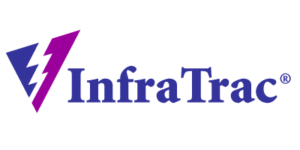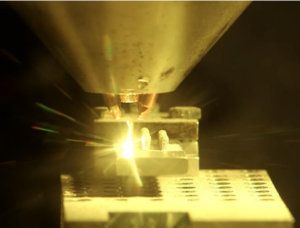 One of the most nagging concerns that plagues the 3D printing industry is that of intellectual property protection. Not only have there been plenty of issues surrounding the theft of designs and models posted online by individual makers, but large corporations also worry about the potential for 3D printing-savvy people to print counterfeit parts. It’s no surprise, then, that Maryland-based InfraTrac has been welcomed so enthusiastically by the 3D printing and manufacturing industries.
One of the most nagging concerns that plagues the 3D printing industry is that of intellectual property protection. Not only have there been plenty of issues surrounding the theft of designs and models posted online by individual makers, but large corporations also worry about the potential for 3D printing-savvy people to print counterfeit parts. It’s no surprise, then, that Maryland-based InfraTrac has been welcomed so enthusiastically by the 3D printing and manufacturing industries.
InfraTrac was honored earlier this year as a winner of the America Makes 2016 Additive Manufacturing Challenge for Small Businesses, thanks to their inventive technique involving the incorporation of unique chemical “fingerprints” into 3D printed objects. The technology allows for products to be marked in a way that is nearly impossible to fake, so that they can be authenticated at any time with a simple spectrometer. While the technology has only been used by InfraTrac thus far on polymer materials, the company has now made a new breakthrough by applying it to metal.
 The company successfully 3D printed a part from Ti6Al4V, a titanium alloy used in medical devices as well as aerospace and defense applications, with an authentication tag applied during the printing process. The chemical tag was designed and applied by a team that included Dr. Abdalla Nassar, additive manufacturing researcher at the Applied Research Laboratory at Penn State University (ARL Penn State), and Dr. Timothy W. Simpson, Professor of Mechanical & Industrial Engineering and Co-Director of the Center for Innovative Material Processing through Direct Digital Deposition (CIMP-3D) at Penn State.
The company successfully 3D printed a part from Ti6Al4V, a titanium alloy used in medical devices as well as aerospace and defense applications, with an authentication tag applied during the printing process. The chemical tag was designed and applied by a team that included Dr. Abdalla Nassar, additive manufacturing researcher at the Applied Research Laboratory at Penn State University (ARL Penn State), and Dr. Timothy W. Simpson, Professor of Mechanical & Industrial Engineering and Co-Director of the Center for Innovative Material Processing through Direct Digital Deposition (CIMP-3D) at Penn State.
The team used CIMP-3D’s Optomec LENS MR-7 3D printer to print several metal parts, taking advantage of the printer’s dual powder feed nozzles to deposit the chemical taggant into one of the Ti6AI4V layers as it was being laid down. Each part had the taggant placed in a different layer and location, and all were then tested by researcher Nathan Valentine at the Center for Advanced Life Cycle Engineering (CALCE) at the University of Maryland, College Park, under the direction of Dr. Diganta Das. Using x-ray fluorescence spectrometry, the CALCE team was able to detect the tags in 100% of the tested parts, regardless of their location.
“We’re thrilled to move into protection of metals, where applications of additive manufacturing are gaining traction,” said Dr. Sharon Flank, CEO of InfraTrac. “Titanium parts are often critical, and counterfeits can be a major safety threat. Fake parts may be cheaper to produce, but they are not sufficient to meet the demands of these applications and will fail. Now we can make tagging and authentication part of the industrial fabrication process. This is a method sensitive enough to permit double protection, secret taggant in a secret spot.”
The success of InfraTrac’s method is a huge step forward for the metal additive manufacturing industry. As Dr. Flank stated, metal parts are often used in much more critical applications than polymer parts, so verifying their authenticity is crucial. A counterfeit aerospace component or medical device has the potential to cost lives. With InfraTrac’s verification system, everyone throughout the entire supply chain can easily check the chemical signature of a part and be assured of its authenticity. Discuss in the InfraTrac forum at 3DPB.com.
Subscribe to Our Email Newsletter
Stay up-to-date on all the latest news from the 3D printing industry and receive information and offers from third party vendors.
Print Services
Upload your 3D Models and get them printed quickly and efficiently.
You May Also Like
Nikon SLM Solutions Sells SLM 500 to Primary Weapon Systems to Expand Suppressor Production
Primary Weapons Systems (PWS) is a Boise, Idaho-based manufacturer of suppressors, firearms, and related components. A subsidiary of Vigilant Gear and a sister company to aftermarket Glock slide manufacturer Lone...
3DPOD 261: Tooling and Cooling for AM with Jason Murphy, NXC MFG
Jason Murphy´s NXC MFG (Next Chapter Manufacturing) is not a generalist service; instead, the company specializes in making tooling. Using LPBF and binder jet, the company produces some of the...
HP and Firestorm Labs Form Partnership to Use Multi Jet Fusion 3D Printers in Deployable Factories
HP Inc., maker of a range of additive manufacturing (AM) solutions including the Multi Jet Fusion (MJF) ecosystem, has announced a partnership with Firestorm Labs, a developer of containerized, deployable...
3D Printing News Briefs, July 2, 2025: Copper Alloys, Defense Manufacturing, & More
We’re starting off with metals in today’s 3D Printing News Briefs, as Farsoon has unveiled a large-scale AM solution for copper alloys, and Meltio used its wire-laser metal solution to...

































